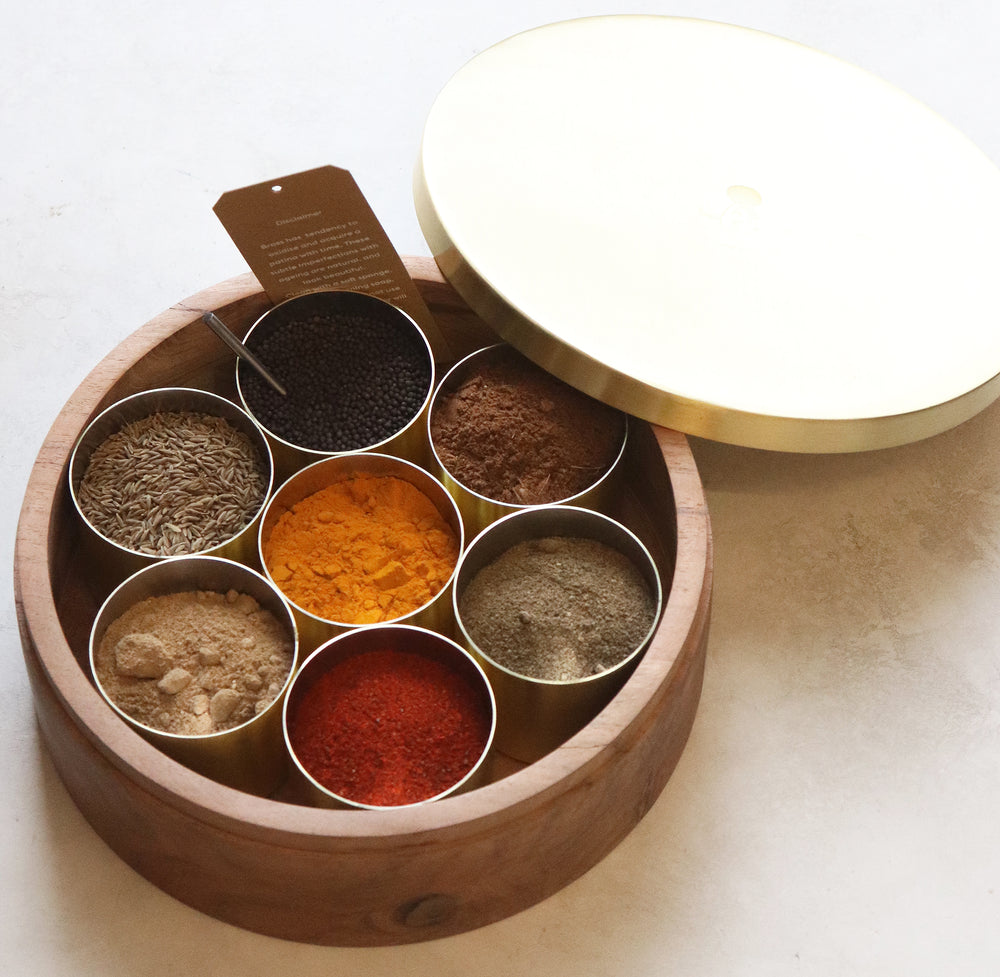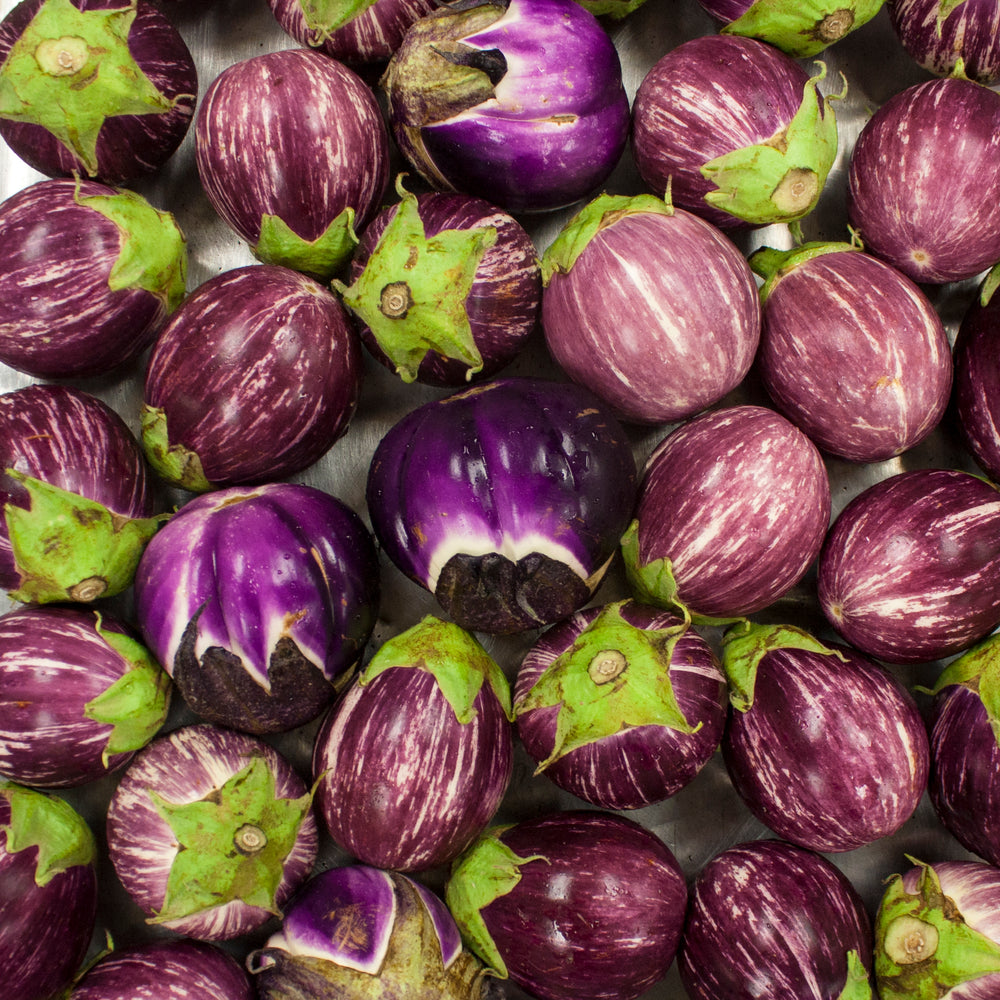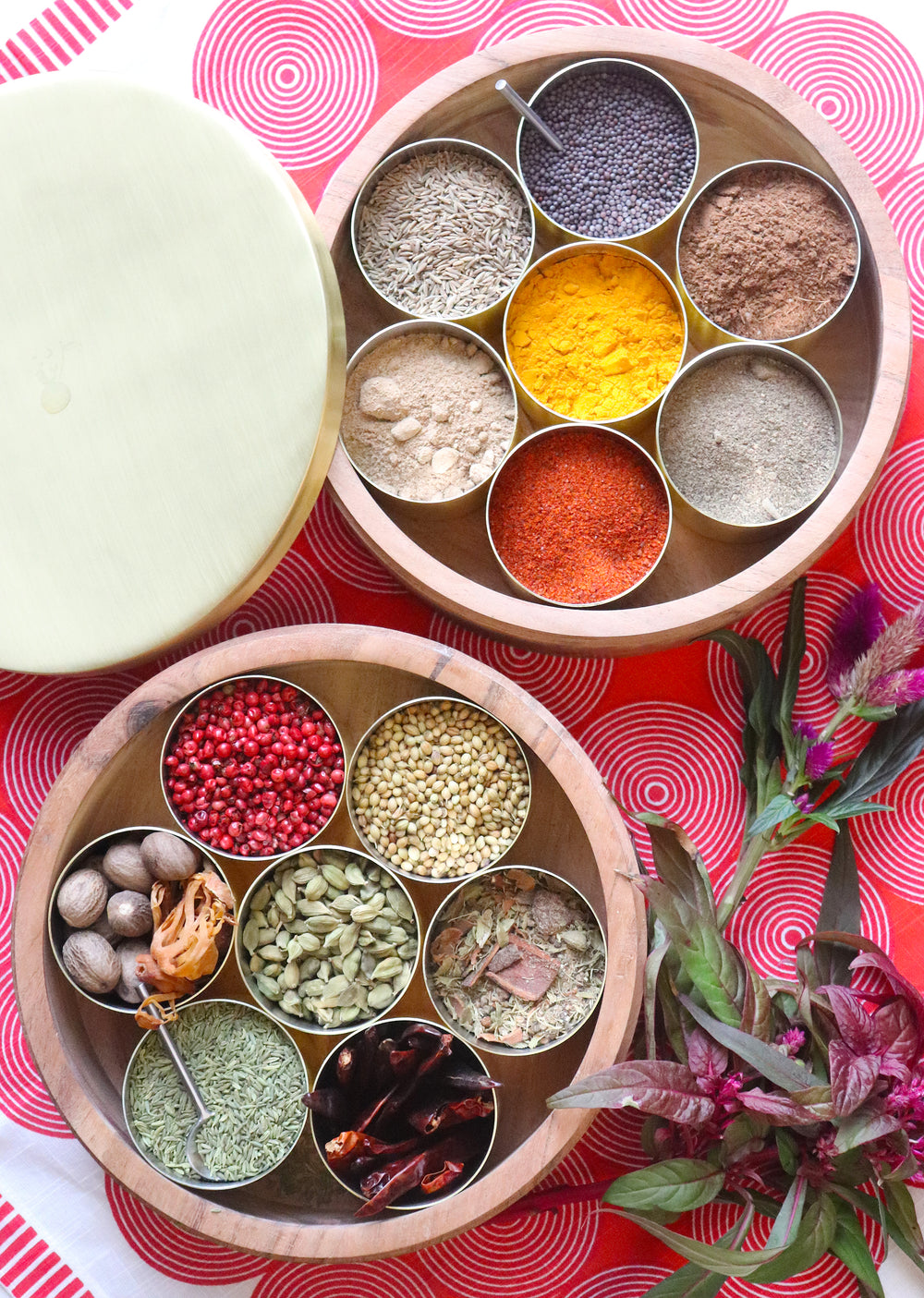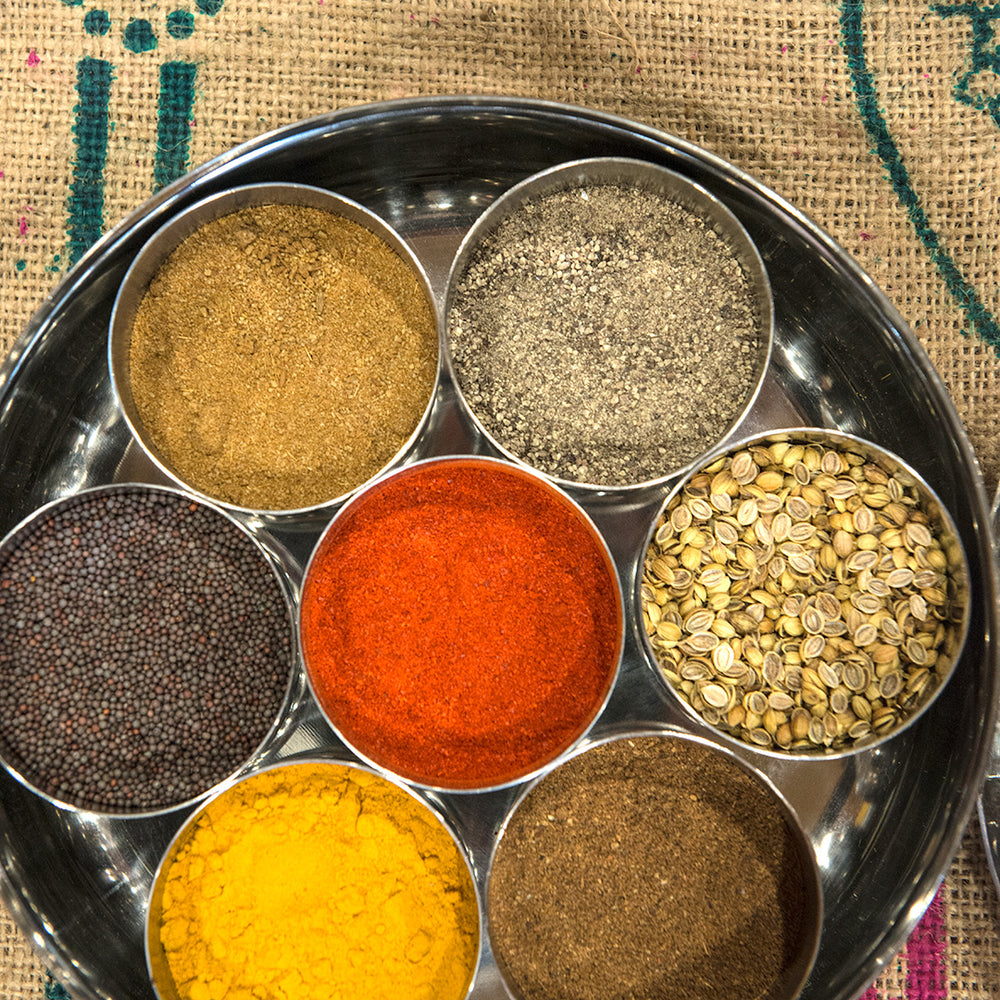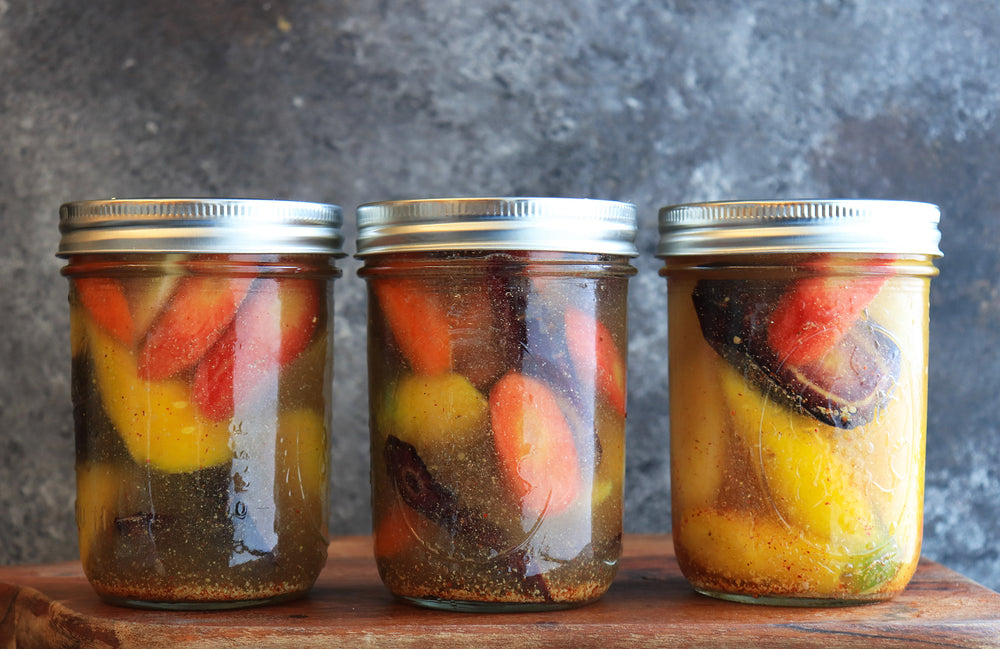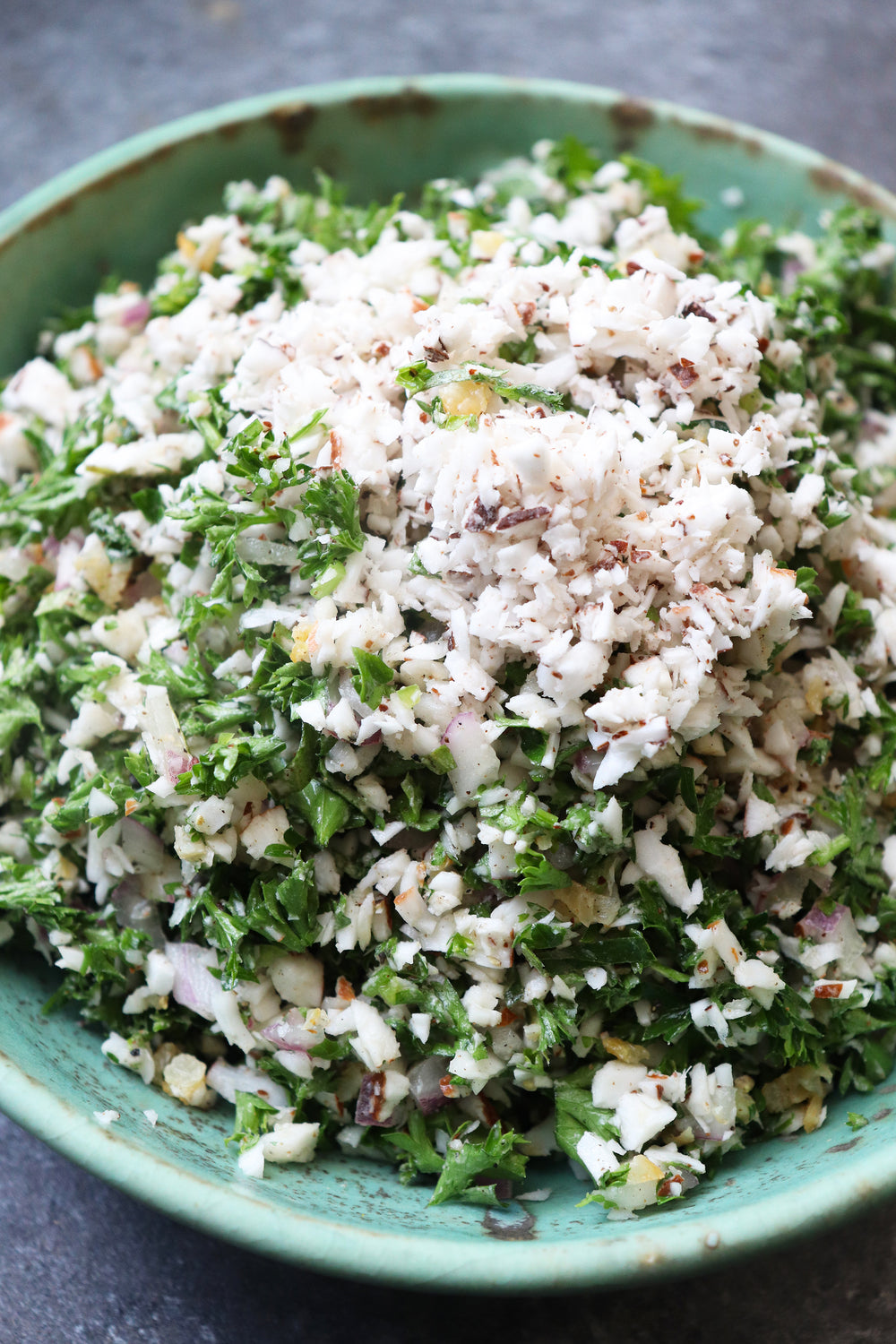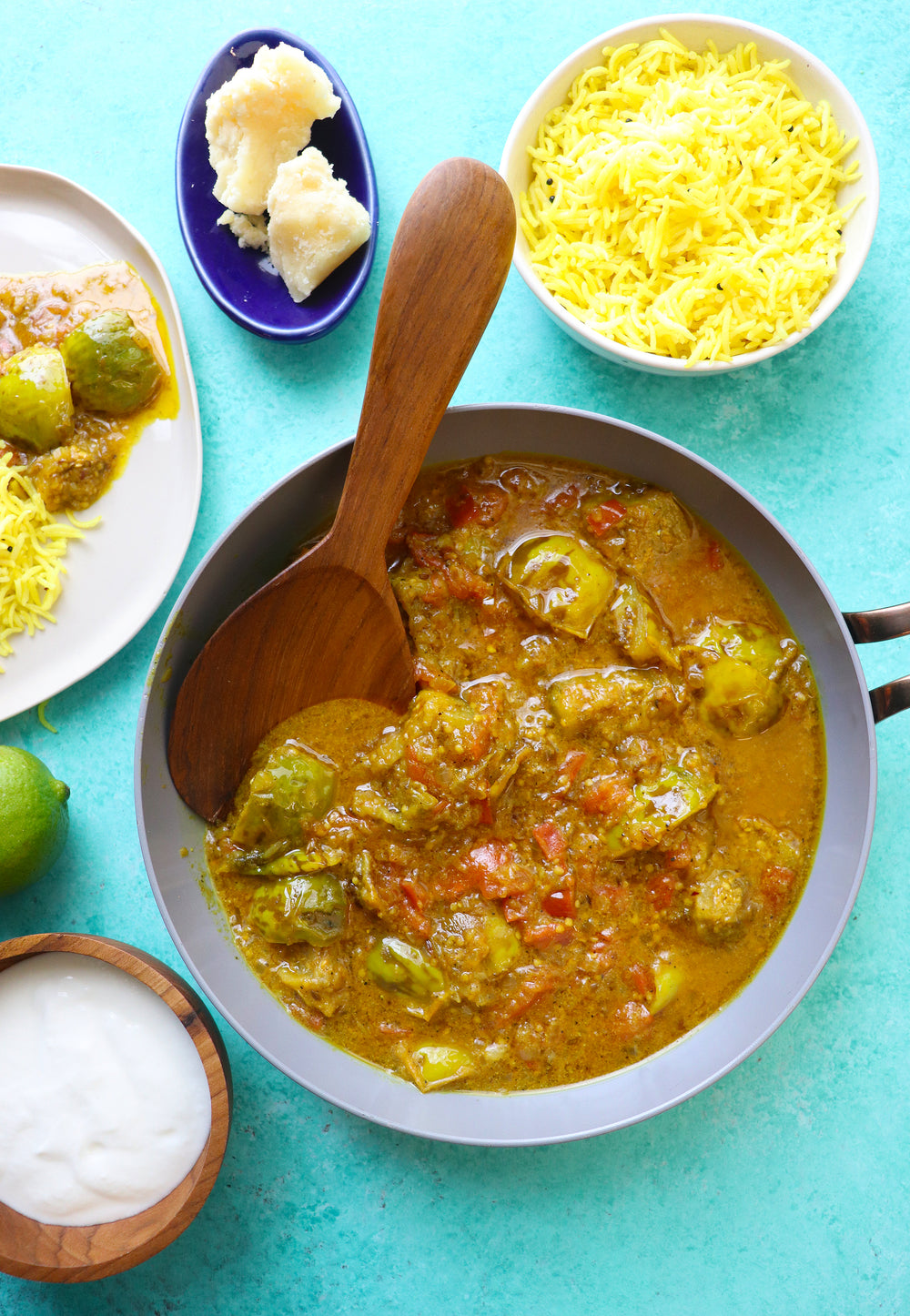
30 Min
DF
GF
NF
V
Pickled Eggplant Masala
Pickles are popular all around the world, from the lacto-fermented cabbage known as sauerkraut introduced by Eastern Europeans to the tiny, spiced cornichons the French adore. The word “pickle” comes from the Dutch word “pekel” or northern German “pokel,” meaning salt or brine, two very important steps in the pickling process.
Pickles have been around since 2000 B.C. when cucumbers, which originated in India somewhere between the Bay of Bengal and the northern Himalayas, were pickled in the Tigris valley. Throughout history, pickling was a necessity as it helped preserve food for a long time.
When a heavy influx of Jewish immigrants arrived in the United States during the late 1800s to early 1900s, they introduced kosher dill pickles to Americans. Cucumbers were washed then piled into big wooden barrels along with dill, garlic, kosher salt and clean water. They were left to ferment for a few weeks to several months then sold on pushcarts in the immigrant tenement district of New York.
The pickles I grew up with, in India were different. Salted green mango was sun-dried and pickled in a coriander fenugreek masala and preserved in mustard oil; lemons were pickled with sugar and chile; and when vegetables such as carrots or cauliflower were fermented in a brine, it was always with the addition of spices including turmeric and mustard.
With eggplants just appearing this spring, this pickle masala makes for a spicy coating — refrigerate it for up to three weeks. Enjoy it in small portions alongside meals or on top of toast with eggs or cheese.
Pickles are popular all around the world, from the lacto-fermented cabbage known as sauerkraut introduced by Eastern Europeans to the tiny, spiced cornichons the French adore. The word “pickle” comes from the Dutch word “pekel” or northern German “pokel,” meaning salt or brine, two very important steps in the pickling process.
Pickles have been around since 2000 B.C. when cucumbers, which originated in India somewhere between the Bay of Bengal and the northern Himalayas, were pickled in the Tigris valley. Throughout history, pickling was a necessity as it helped preserve food for a long time.
When a heavy influx of Jewish immigrants arrived in the United States during the late 1800s to early 1900s, they introduced kosher dill pickles to Americans. Cucumbers were washed then piled into big wooden barrels along with dill, garlic, kosher salt and clean water. They were left to ferment for a few weeks to several months then sold on pushcarts in the immigrant tenement district of New York.
The pickles I grew up with, in India were different. Salted green mango was sun-dried and pickled in a coriander fenugreek masala and preserved in mustard oil; lemons were pickled with sugar and chile; and when vegetables such as carrots or cauliflower were fermented in a brine, it was always with the addition of spices including turmeric and mustard.
With eggplants just appearing this spring, this pickle masala makes for a spicy coating — refrigerate it for up to three weeks. Enjoy it in small portions alongside meals or on top of toast with eggs or cheese.

30 Minutes
8
Eggplant Prep:
To make the masala:

Notes & Variations
- Jaggery is a raw palm sugar sold in blocks at most Indian grocers — substitute with 3 tablespoons of sugar (jaggery is more concentrated than sugar).
- This masala can be used for other vegetables, such as cooked carrots or cauliflower.
Eggplant Prep:
To make the masala:

Notes & Variations
- Jaggery is a raw palm sugar sold in blocks at most Indian grocers — substitute with 3 tablespoons of sugar (jaggery is more concentrated than sugar).
- This masala can be used for other vegetables, such as cooked carrots or cauliflower.
Tags:

Stock Your Pantry
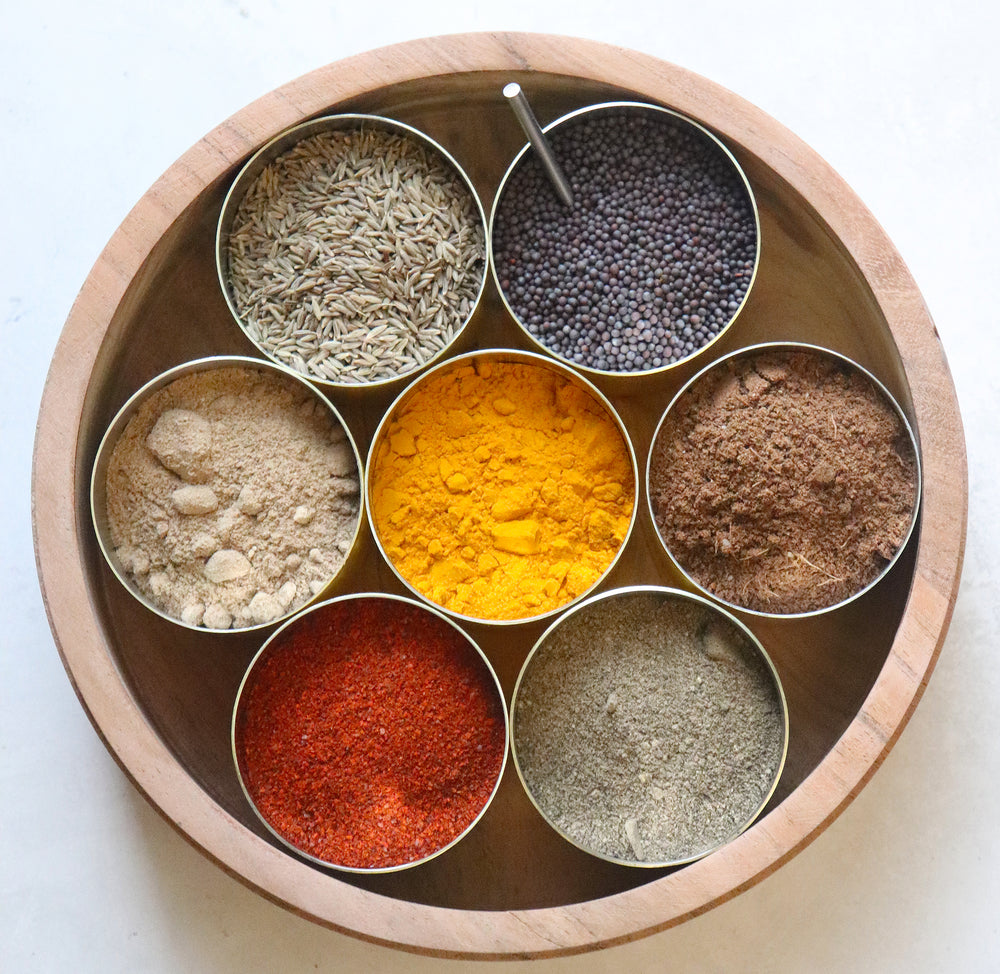
A handmade spice box containing red chile, turmeric, black pepper, cumin seeds, mustard seeds, amchur and garam masala.
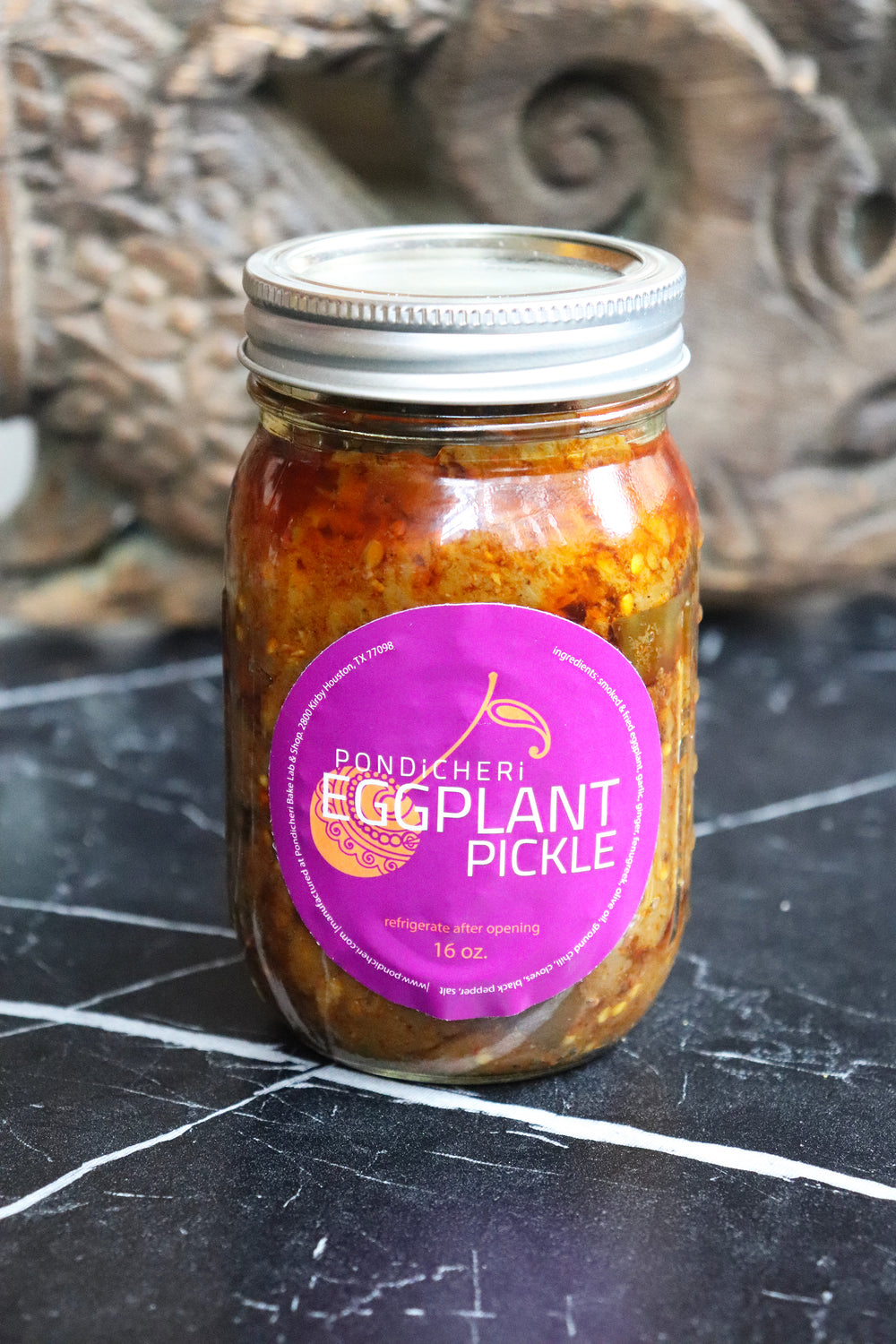
Local heirloom eggplants smoked, fried and stewed with olive oil, fenugreek, garlic and spices. Enjoy as a spread or pickle.
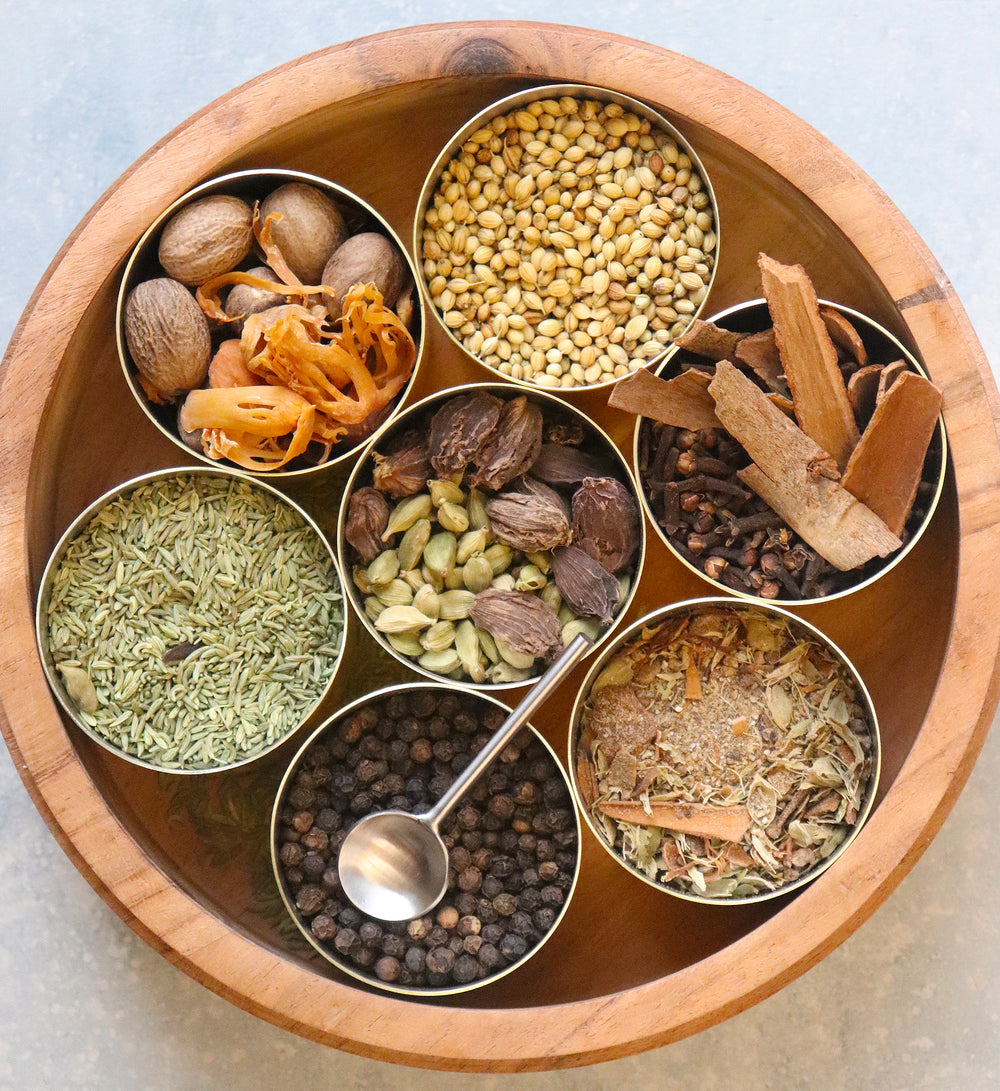
A handmade spice box containing chai masala, fennel seeds, coriander seeds, whole black peppercorns, whole green cardamom pods with a few black cardamom pods, garam masala, mace pods and nutmeg.
Tags:

Stock Your Pantry
